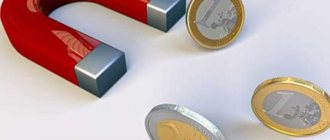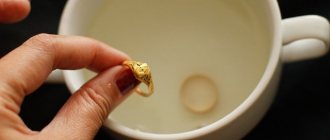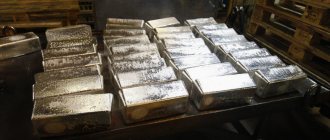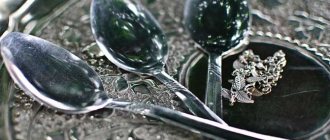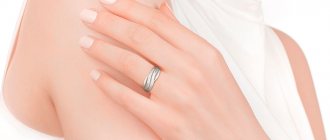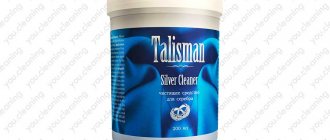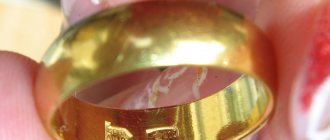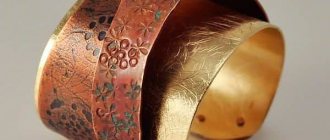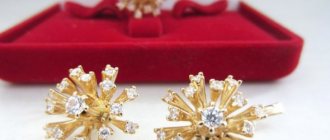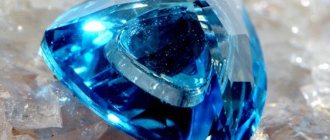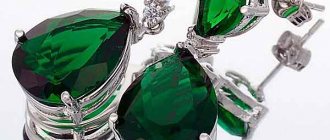If handled carelessly, silver chains often break. And then the problem arises of restoring the integrity of your favorite jewelry. Of course, you can turn to a jewelry workshop for help. But such repairs require additional costs and are not always convenient due to time or other circumstances. In addition, the procedure for connecting broken links is simple, and you can do it yourself. The article will discuss how to solder a silver chain with your own hands at home.
Soldering with silver requires a certain skill, knowledge of the physical and chemical properties of the material and the presence of some tools and components for its implementation.
Features of silver soldering
The melting point of pure metal is 960 degrees Celsius. Household soldering irons, even the most powerful ones, do not heat up above 400 ºС. Therefore, a material containing several components is used as solder, one of which is silver. And to heat the parts being connected, soldering gas torches are used, capable of heating up to 850 degrees. The alloy must match the product in color, but at the same time be subject to melting at a lower temperature. The best aesthetic effect will be ensured by using solder that matches the composition of the one specified for the sample of the product.
How and with what help to solder silver?
Before you decide to solder parts of a silver product yourself, you need to understand the physical and chemical properties of the noble metal. The melting point of silver is 960 degrees. This is an average for the various metals used to make jewelry.
The melting point depends on how much pure silver is contained in the alloy. To ensure high-quality soldering, you need to carefully approach the choice of silver solder.
It is a strong solder joint and is used for soldering both non-ferrous and ferrous metals, as well as various alloys. For ease of use, all solders are subject to markings, including an alphanumeric set. The digital indicator determines the amount of silver in the solder as a percentage.
Any seam soldered with solder is resistant to corrosion, does not deform, and is durable. The most important factor of the above is anti-corrosion. To ensure that this point is observed, you should choose solders that have a high content of pure silver.
These materials are sold in specialized stores. The optimal solder is a solder whose melting point is above 240 degrees. Therefore, you need to buy an alloy marked PSR2 or PSR2.5. An alternative to such solder can be a special mixture.
If it is impossible to purchase solder at special retail outlets, you can make it yourself. The most common and high-quality composition, which includes:
- Silver – 45%;
- Copper – 25%;
- Zinc – 30%.
You may be interested in: Gold bracelet for watches: review, choice
All components are melted in a muffle furnace. After melting, the mixture is poured onto a substrate and passed through a machine to produce sheets of the desired thickness. For soldering, sheets of 1-3 mm are used. Strips of the required length are cut from them.
How does soldering of silver products occur?
Before repairing a broken chain, the parts to be connected must be degreased. To do this, the flux is diluted with water and the resulting slurry is applied directly to the rupture sites. The product is installed on a fireproof base and is well fixed. Such precautions help to avoid deformation of the chain during operation.
Using wire cutters, cut a piece of solder to the required size and place it at the site of the intended welding. The burner is brought to the side of the product and the joint is evenly heated. The intensity of the gas jet should not disturb the location of the flux and solder. After the degreasing component has melted, the flame force is increased to form a solder joint. If the amount of solder is not enough, use tweezers to add a suitable piece and continue working.
After cooling, the product must be cleaned of flux residues. To do this, use an acid solution or liver sulfur (a mixture of sulfur and potash).
How to solder a product: basic methods
At home, you can use one of two soldering options applicable for silver:
1. Gas burner. This method is not only simple, but also cost-effective. You need to proceed as follows:
- Clean the entire surface of the parts being soldered from visible dirt and blackness;
- Apply a thin layer of flux to the elements. You can cook it yourself. To do this, borax is poured with water and heated in a water bath. The mixture is cooled, and the resulting crystals are crushed in a mortar.
At home, you should avoid formulations that contain cadmium elements. Its vapors can lead to poisoning.
- Place a pre-prepared piece of solder at the soldering site. It can be cut with wire cutters;
- Use a gas burner to heat the product from its side, paying attention to the position of the solder. It should not be blown away by the flame;
- As the flux melts, the flame should be increased until the solder forms a seam. If there are insufficient materials, they can be added during work;
- After soldering is completed, allow the product to cool and wipe all parts of the item being soldered at the junction with sandpaper to remove traces of flux. It will also remove excess solder.
When soldering silver items, it is better not to use tin and lead solder. It will help out in an emergency, but in the future it will complicate the connection of the jewelry in the places where it was used. And part of the chain will have to be cut out. The same point should be clarified in jewelry workshops if the choice turned out to be in their favor.
2. Soldering iron. To solder parts of a product with a soldering iron, you should choose a device with a thin tip. It is better to buy POS-60 solder for such work. It begins to melt at a temperature of 180 degrees.
You may be interested in: Review of the best platinum jewelry today
This solder is somewhat different from the usual types. It is made in the form of a tube, the inside of which is filled with resin. It is this that is an alternative to borax flux and performs the function of protecting the alloy from possible oxidation. The procedure will be as follows:
- The surface of the product is cleaned from oxides and other contaminants;
- The joints are heated to such a temperature that it becomes above the melting point;
- Solder with flux embedded in it is placed at the melting site;
- The surface of the product is heated with a soldering iron. Under the influence of high temperature, the solder begins to melt and spread evenly over the surface;
- The product is allowed to cool and the joints are cleaned with sandpaper.
When working with a torch and a soldering iron, you must take precautions, since both devices can cause a fire.
It is important to understand that any poor-quality work can ruin the product. Therefore, if possible, it is better to entrust a broken chain or other silver jewelry to professionals.
Using a soldering iron
Methods for repairing silver items at home are not limited to the method using a gas torch. To repair small cracks, you can use POS-60 solder, which has a melting point of 180 degrees. It is produced and sold in the form of tubes filled with resin. The latter is used instead of flux in conventional soldering. The same solder is used when repairing electronic circuits. This area must be degreased with a colony, which will also play the role of protection from the negative effects of ambient air during heating. The area to be repaired is heated well and a piece of solder is placed in it. Using a soldering iron, maintain the desired temperature until it completely melts and joins the parts.
Reasons why the chain broke
First of all, you need to consider the reasons that led to the breakdown of the jewelry. It could be:
- marriage of jewelry. To confirm or refute the version of low-quality products, an examination is required. If a manufacturing defect is confirmed, the manufacturer is obliged to pay for repairs and examination or return the money spent to the buyer;
- light chain weight. One of the popular reasons why a chain breaks is due to its light weight. Often decorations are made from tubes. The weight of such structures is less, and the cost is much lower. However, by saving on the quality of the chain, you can spend a lot of money on its repair;
- an attempt to unravel the old product. Often, a problem such as a chain break occurs with worn jewelry, in which the links have become loose from prolonged use. To determine whether repairs are required, it is necessary to carefully inspect the product through a magnifying glass. If there are links that are frayed, it is recommended to remove them or replace them with new ones before the structure breaks;
- wearing heavy pendants. It is always necessary to take into account the ratio of the weight of the pendant and the thickness of the gold or silver chain on which it will hang. Often an Orthodox or Catholic cross is worn on a chain;
- the chain is hollow. Such a product can rupture from the slightest mechanical impact. It is highly not recommended to wear pendants and crosses on them, as the chain will quickly wear out.
Precautionary measures
Working with solders can be hazardous to health and therefore requires compliance with safety precautions. The procedure should be carried out in a well-ventilated area. While working, you must wear protective clothing and gloves. When performing direct soldering, use safety glasses or a mask. Heated parts and materials are held with tongs at a safe distance from the face. After working with flux, hands should be washed thoroughly, as even a small amount of this substance, if swallowed, can cause serious harm to health. For this reason, smoking is strictly prohibited during soldering. If your health worsens after soldering silver items, you should immediately consult a doctor.
Repair of chains and bracelets
| Type of work | Metal | Price |
| Soldering one place in a simple weave (let's say soldering a broken chain link) | Silver | from 250 rub. |
| Soldering one place in a simple weave (let's say soldering a broken chain link) | Gold | from 350 rub. |
| Soldering one place in a complex weave (hollow) | Silver | from 350 rub. |
| Soldering one place in a complex weave (hollow) | Gold | from 450 rub |
| Soldering one place of the product with a laser (almost any weaving can be soldered) | Silver | from 450 rub |
| Soldering one place of the product with a laser (almost any weaving can be soldered) | Gold | from 550 rub. |
| Soldering one place of the product with a laser (almost any weaving can be soldered) | Bijouterie | from 450 rub |
| Repair of a pin in a chain or bracelet (if there is a large number of replacement pins in a product, the price is reduced) | Silver | from 450 rub |
| Repair of a pin in a chain or bracelet (if there is a large number of replacement pins in a product, the price is reduced) | Gold | from 650 RUR |
| Repair of a pin in a chain or bracelet (if there is a large number of replacement pins in a product, the price is reduced) | Bijouterie | from 450 rub |
| Repairing a spring or replacing a lock - carabiner (price depends on the size of the lock) | Silver | from 300 rub. |
| Repairing a spring or replacing a lock - carabiner (price depends on the size of the lock) | Gold | from 350 rub. |
| Repair of springs in a round lock - Springel (cannot be repaired! replacement only) | Silver | from 250 rub. |
| Repair of springs in a round lock - Springel (cannot be repaired! replacement only) | Gold | from 350 rub. |
| Reducing the length of a chain or bracelet (basically 2 solders) | Silver | from 450 rub |
| Reducing the length of a chain or bracelet (basically 2 solders) | Gold | from 550 rub. |
| Adding links to a chain or bracelet (depending on the weave) | Negotiable | |
| Cleaning and polishing a chain or bracelet (depending on the weave) | Negotiable | |
| Making a small ring for a chain or bracelet (including metal) | Silver | from 250 rub. |
| Making a small ring for a chain or bracelet (excluding metal) | Gold | from 350 rub. |
| With a large number of soldering or pin replacements in one product, the price is reduced | guarantee | 12 months |
Soldering process on a gas torch step by step
Action plan when working with a gas burner:
- Darkening and traces of oxidation are removed from the surface of silver.
- A layer of liquid flux is applied to the soldering area.
- A small piece of solder is applied to the soldering site. Its dimensions should be comparable to the dimensions of the faces being connected.
- A flame from a torch is supplied to the soldering site, but so that the solder is not blown away.
- Once the solder begins to melt, the torch flame is gradually increased until the solder becomes molten and forms a single edge joint.
- After cooling, the joint is cleaned and polished. It is necessary to smooth out all roughness and clean off the remaining flux.
Source
Necessary components for how to solder silver at home
How to solder silver at home? Soldering at home is quite possible, but for this you need to take care of special props, master simple skills, and also familiarize yourself with the recommendations that will be presented in this article.
For the job you will need special tools that are easy to purchase.
Fireproof surface
The refractory surface itself is a working platform for soldering. It will protect the room from fire, allow you to conveniently place the decoration, and then carry out all the work safely.
The surface can be made of asbestos board, it can also be a sheet of metal or a workbench top.
Soldering iron
As a soldering iron, it is better to choose not a classic product for soldering ferrous metal, but a miniature soldering iron, which is used for soldering microcircuits. Its qualitative difference is the small size of the filament needle, as well as light weight and fast heating. Otherwise, it completely replicates the original product. Operates from a 220V power supply.
Gas-burner
The gas burner consists of a removable cylinder, which is changed when the gas runs out, a bell and a piezoelectric element. When you press the button, gas is supplied to the bell under pressure, which is ignited by the piezoelectric element.
Burner for melting silver
A burner is necessary for melting the edges of silver jewelry, as well as for creating a fusing area.
Solder: what is it, types
Solder is necessary to create a thin “bridge” of the melt, which, when solidified, solders the elements of the jewelry. How to solder with silver solder?
For soldering silver products, as a rule, only silver-based solders are used with the addition of other low-melting metals.
The silver content must be at least 70%; tin can be used as a filler metal.
It is this composition of the solder that ensures its strength, cohesion with the base, that is, with the jewelry, as well as strength and durability. The most commonly used solder is PSR-70 grade, which contains 70% silver.
PSR-70 can be produced in the form of granular powder, wire, short rod up to 3-5 mm, and also in the form of a thin sheet, the thickness of which is comparable to the thickness of chocolate candy foil.
Homemade and branded flux
The purpose of the flux is to cover the damaged surface during soldering, and also to prevent atmospheric air or moisture from reaching it. Now flux can be purchased ready-made at any store that sells plumbing supplies. It is a whitish powder, which is packaged in sachets.
Flux for soldering silver with your own hands, consists of an aqueous solution with borax powder.
Soldering flux -
Borax powder - is a chemical substance, the official name is “sodium tetraborate”. It can be freely purchased at any large pharmacy, as it is used by medicine.
How to make flux - the first step in the question of how to solder silver:
- The borax must be poured into a metal container, or into a saucepan.
- Pour in distilled water (it must be free of impurities; simply boiled water will not work).
- The powder dissolves when heated over low heat.
- After dissolution, a homogeneous mixture is obtained, which must be cooled at room temperature.
- After cooling, the flux substance crystallizes at the bottom. The crystals must be removed.
- Afterwards they are ground to a powder, to which water is added.
- The substance should be similar to gouache in consistency.
Acid solution for etching
Pickling acid is used to degrease soldering surfaces. If the surface is dirty, the solder will not “set” and the decoration will fall apart.
The most commonly used etching fluid is hydrochloric acid (HCl) or sulfuric acid solution (H2SO4). They can be purchased at specialized technical stores that sell soldering supplies.
Tools
In addition to a soldering iron, solder, acid, you will need the following auxiliary tools to solder silver:
- Tweezers: necessary for holding silver jewelry while working with a soldering iron or torch.
- Nippers: they are used to bite off solder or fragments of the jewelry itself during restoration or alteration.
- Copper pliers: necessary for squeezing two surfaces when soldering. Copper is used since any other hard metal can deform the jewelry.
- Brush: A brush is used to apply flux and also clean the surface; you can also apply acid.
- A piece of cloth: a flannel cloth is necessary for wiping after the silver has been degreased with an acid solution.
